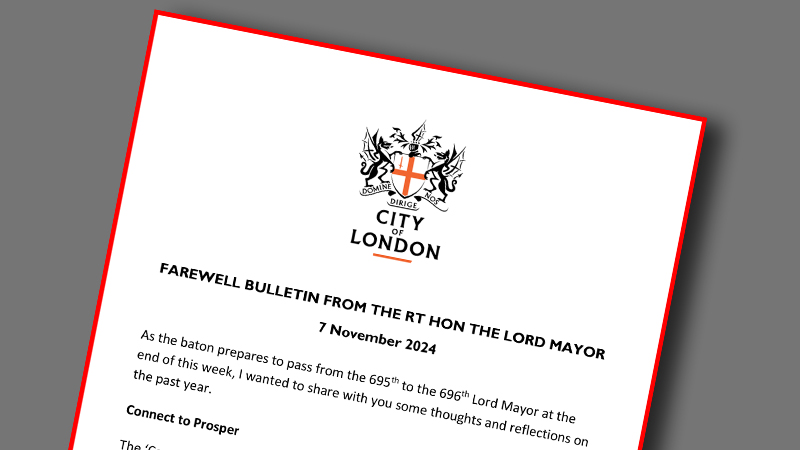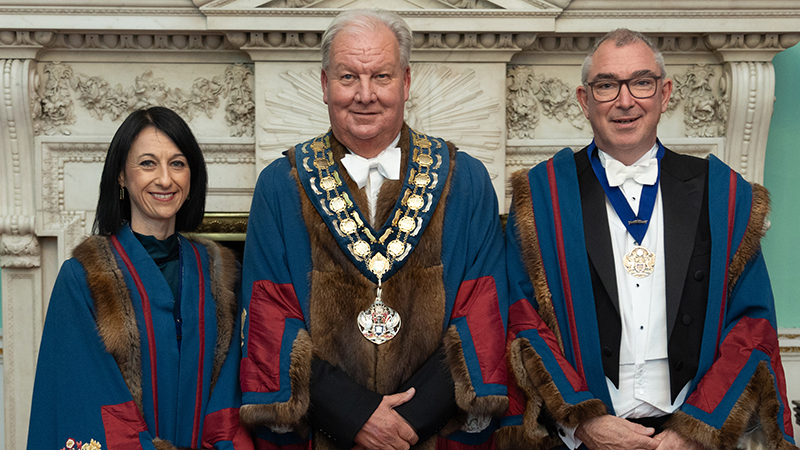A number of Liverymen and Freemen were invited to the launch party of Virginia Rounding’s latest book The Burning Time at St. Sepulchre-without-Newgate on 20th April.
An established author
Virginia is an established writer, author of biographies of Catherine the Great, Tsar Nicholas II and Empress Alexandra, and of Grandes Horizontales, a study of French courtesans. She also contributes to a number of newspapers and magazines, such as the Daily Telegraph and the Financial Times.
What’s The Burning Time about?
Smithfield, on the fringes of Roman London, was once a place of revelry. Jesters and crowds flocked for the medieval St Bartholomew’s Day celebrations, tournaments were plentiful and it became the location of London’s most famous meat market. Yet in Tudor England, Smithfield had another, sinister use: the public execution of heretics.
Spanning the reigns of British history’s most remarkable dynasty, The Burning Time is a vivid insight into an era in which what was orthodoxy one year might be dangerous heresy the next. The first martyrs were Catholics, who cleaved to Rome in defiance of Henry VIII’s break with the papacy. But with the accession of Henry’s daughter Mary – soon to be nicknamed ‘Bloody Mary’ – the charge of heresy was levelled against devout Protestants, who chose to burn rather than recant.
At the centre of Virginia’s vivid account of this extraordinary period are two very different characters. The first is Richard Rich, Thomas Cromwell’s protégé, who, almost uniquely, remained in a position of great power, influence and wealth under three Tudor monarchs, and who helped send many devout men and women to their deaths. The second is John Deane, Rector of St Bartholomew’s, who was able, somehow, to navigate the treacherous waters of changing dogma and help others to survive.
The Burning Time is their story, and the Lord Mayor, Sheriffs and Aldermen of the City who were responsible for organising the burnings. It’s also the story of the hundreds of men and women who were put to the fire for their faith. It’s a gripping insight into a time when people were willing to die, and to kill, in the name of religion.
An interesting place for a book launch
Dating back to 1137, St. Sepulchrewithout- Newgate is the largest parish church in the City of London. Originally named St. Edmund, the name was expanded to St. Edmund and the Holy Sepulchre in the 12th Century while under the control of Augustinian Canons – or Knights of the Holy Sepulchre, so the church became known as ‘St Sepulchre’. Its official name includes the ‘without-Newgate’ suffix as it was located just outside the New Gate of the Roman Wall surrounding the City (now demolished). Damaged heavily in the Great Fire of 1666, it was restored by Wren.
The twelve church bells of St. Sepulchre are remembered in the rhyme “Oranges and Lemons” in the couplet “so when will you pay me, say the Bells of Old Bailey”.
How did it go?
Virginia was busy signing copies at her party, and all the launch copies were sold on the day. There was a full page on the book as ‘Book of the week’ in the Saturday edition of The Times.
Liverymen and Freemen who are on Twitter please retweet from @WCOBM. Go Virginia!
It’s available through booksellers everywhere, including Amazon.



